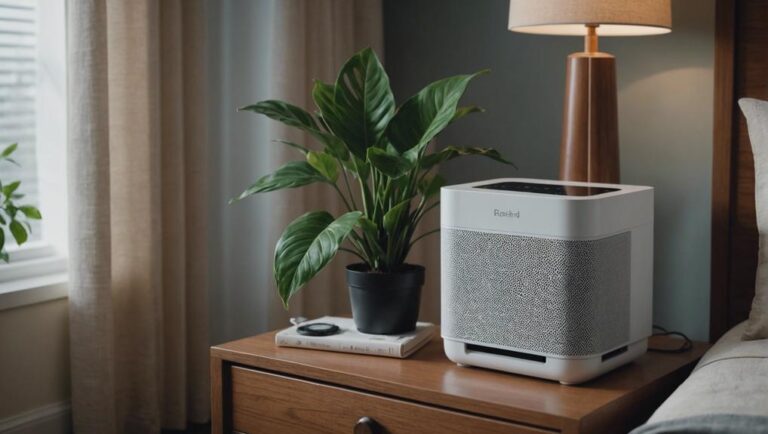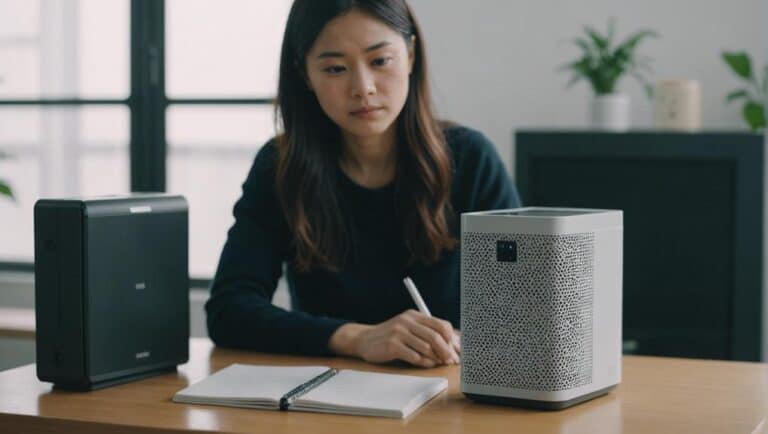Unlocking Effective Room Ventilation: Expert Tips for Windowless Spaces
In an era where many people spend a significant amount of time indoors, it is crucial to ensure the air we breathe is clean and fresh. However, for those residing or working in windowless spaces, achieving proper room ventilation can be a challenge.
Fortunately, experts have developed innovative techniques and strategies to unlock effective room ventilation in these otherwise stifling environments. In this article, we will explore expert tips that provide invaluable insights into enhancing indoor air quality and promoting a healthier living or working environment in windowless spaces.
Whether you are struggling with poor circulation or seeking new ways to optimize airflow, these professional recommendations will empower you to transform your space into a well-ventilated oasis. Join us as we delve into the world of improving room ventilation in windowless spaces and unlock the secrets to breathing easy!
Importance of Room Ventilation in Windowless Spaces
The Importance of Room Ventilation in Windowless Spaces
In windowless spaces, proper room ventilation becomes even more crucial for ensuring a healthy and comfortable environment.
- Maintaining air quality: Without windows, there is limited natural airflow, making it essential to have an effective ventilation system in place. A well-ventilated space helps remove stale air, pollutants, and odors while replenishing the oxygen supply. This can prevent the buildup of potentially harmful contaminants and promote better indoor air quality.
- Preventing moisture accumulation: In windowless areas such as basements or bathrooms, condensation and humidity levels can rise quickly without adequate ventilation. This creates an ideal breeding ground for mold and mildew growth, which not only damages surfaces but also poses health risks. Proper room ventilation helps control moisture levels by allowing excess water vapor to escape, reducing the chances of mold formation.
- Regulating temperature: Windows often play a significant role in regulating temperature through natural light and heat exchange with the outdoors. In their absence, effective room ventilation becomes crucial for maintaining optimal temperatures within windowless spaces. By providing mechanical airflow or integrating climate control systems like fans or air conditioners with proper vents or ducts, you can ensure a comfortable indoor environment regardless of external weather conditions.
Understanding the Challenges of Ventilating Windowless Rooms
Ventilating windowless rooms presents unique challenges that require careful consideration. Without natural air flow from windows, it is crucial to find alternative methods to maintain air quality and circulation. Here are some key factors to understand:
- Limited airflow: Windowless rooms lack the natural ventilation provided by open windows, which can lead to stagnant air and a build-up of pollutants.
- Poor air quality: Without proper ventilation, windowless rooms may become breeding grounds for airborne contaminants such as mold spores, bacteria, and volatile organic compounds (VOCs).
- Lack of sunlight: Natural light plays a vital role in preventing moisture accumulation and controlling indoor humidity levels. In windowless spaces, this sunlight is absent, leading to potential issues with dampness and mold growth.
To effectively ventilate these spaces and overcome these challenges, it is essential to implement specialized solutions tailored for windowless environments.
Innovative Techniques for Air Circulation in Windowless Spaces
One efficient technique for air circulation in windowless spaces is utilizing mechanical ventilation systems. These systems work by extracting polluted air and introducing fresh air into the room. By installing an HVAC system equipped with HEPA filters, airborne contaminants such as dust, allergens, and bacteria are effectively removed from the space.
Another innovative solution is implementing ducted indoor green walls. These vertical gardens not only add aesthetic value to a room but also contribute to improved air quality. Through photosynthesis, plants release oxygen into the environment while absorbing carbon dioxide – this natural process helps to circulate and purify the air in windowless spaces.
Additionally, embracing advanced technologies like smart sensors can optimize airflow within enclosed areas without windows. These sensors monitor carbon dioxide levels and automatically adjust ventilation rates accordingly, ensuring optimal indoor air quality at all times.
To enhance these techniques even further:
- Regular maintenance of mechanical systems is essential to maximize their efficiency.
- Selecting low-toxicity plants for indoor green walls minimizes potential allergic reactions or other health risks.
- Integrating automated control mechanisms allows real-time adjustments tailored to specific user needs. By considering these innovative approaches, any windowless space can have effective room ventilation that promotes healthy living conditions.
The Role of Air Purifiers in Enhancing Indoor Air Quality
Air purifiers play a crucial role in maintaining and improving indoor air quality, especially in windowless spaces. These devices are designed to filter out harmful particles and pollutants from the air, ensuring that the air you breathe is clean and healthy.
By utilizing filters such as HEPA (High Efficiency Particulate Air), air purifiers effectively remove allergens like dust mites, pet dander, and pollen that can trigger allergies or respiratory problems. They also capture bacteria, viruses, mold spores, and other airborne contaminants that could lead to illness.
In addition to these health benefits, air purifiers can help eliminate unpleasant odors caused by cooking smells, pets, or cigarette smoke. With regular use of an air purifier in your windowless space, you can significantly improve the overall indoor air quality and create a more comfortable living or working environment.
Harnessing Natural Light to Improve Ventilation in Windowless Spaces
Utilize reflective surfaces
In windowless spaces, the absence of natural light can make it feel dark and stuffy. To improve ventilation, consider using reflective surfaces strategically. Mirrors placed opposite existing windows or on walls can help bounce light around the room, making it appear brighter and more spacious. This not only enhances the perception of ventilation but also contributes to a more pleasant environment.
Install light tubes or skylights
To bring natural light into windowless spaces, consider installing light tubes or skylights. These devices capture daylight from outside and direct it into the interior through a highly reflective tube or dome structure. By harnessing sunlight effectively, these installations provide ample illumination without compromising privacy or security. Additionally, they enhance air circulation as they often come with built-in vents that allow fresh air to enter while improving overall ventilation within the room.
Incorporate glass partitions
If possible, incorporate glass partitions into windowless spaces for improved natural lighting and better airflow control. Glass dividers not only separate different areas within a space but also allow unobstructed transmission of ambient light throughout the room. This creates an illusion of openness while significantly brightening up the environment naturally. When combined with other strategies such as adjustable blinds for privacy management and operable windows for controlled air exchange, these glass partitions contribute to effective room ventilation in windowless areas.
Strategies for Reducing Humidity and Moisture in Windowless Rooms
Maintaining a dry environment in windowless rooms can be challenging, but it is not impossible. By implementing the following strategies, you can effectively reduce humidity levels:
- Invest in a dehumidifier: A dehumidifier will help remove excess moisture from the air, preventing mold growth and musty odors. Choose one with an appropriate capacity for your room size.
- Use moisture-absorbing materials: Place moisture-absorbing materials such as silica gel packets or charcoal briquettes near areas prone to dampness. These materials absorb excess moisture from the air, keeping it dry.
- Improve ventilation: Although windows may not be available, you can still enhance ventilation through alternative methods. Install vents or exhaust fans to facilitate proper airflow and expel humid air out of the room.
Remember that regular maintenance of these strategies is crucial to ensure their effectiveness over time. Monitoring humidity levels using a hygrometer will also help determine if further measures are necessary.
Optimizing Airflow with Fans and Ventilation Systems
Installing fans in windowless spaces can greatly improve the circulation of air. Ceiling fans, for example, can help distribute fresh air throughout the room while also minimizing humidity levels. Portable floor fans or desk fans are other effective options for increasing airflow within a confined space. These small appliances can be strategically placed near windows, doorways, or in corners to encourage ventilation.
In addition to fans, utilizing ventilation systems is another key strategy for optimizing airflow in windowless areas. HVAC systems equipped with proper filters can remove pollutants from indoor air while efficiently circulating clean air throughout the room. Another option is mechanical extraction units that remove moisture and odors from stagnant rooms by exhausting stale air outside and pulling fresh air inside through vents or ducts.
To ensure these methods are maximally effective, it’s important to regularly clean and maintain your fan and ventilation systems. Dust accumulation on fan blades can impede their performance, so make sure to wipe them down frequently. Additionally, change filters regularly as recommended by manufacturers to prevent clogging and allow optimal airflow throughout your windowless space.
By implementing these strategies for optimizing airflow with well-placed fans and efficient ventilation systems, you can significantly improve the comfort and quality of windowless spaces.
Tips for Maintaining a Fresh and Odor-Free Environment in Windowless Spaces
Adequate ventilation is crucial when it comes to maintaining clean and fresh air in windowless spaces. Here are a few expert tips to keep your environment odor-free:
- Invest in an efficient air purifier: A high-quality air purifier can effectively remove dust, allergens, and unpleasant odors from the air, ensuring that your space remains fresh and clean.
- Use natural odor absorbers: To combat odors naturally, try placing bowls of baking soda or activated charcoal around the room. These substances have properties that help absorb odors and leave your space smelling neutral.
- Keep the area clutter-free: Clutter can hinder proper airflow and trap stale odors. Regularly decluttering your windowless space will not only improve its ventilation but also prevent unwanted smells from accumulating.
Remember, while these tips can help minimize odor issues in windowless spaces, addressing the root cause by improving ventilation should be a priority for long-term freshness.






